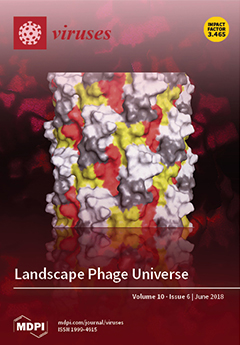1
Bacteriophage Laboratory, Ludwik Hirszfeld Institute of Immunology and Experimental Therapy, Polish Academy of Sciences, Rudolfa Weigla Street 12, 53-114 Wroclaw, Poland
2
Phage Therapy Unit, Ludwik Hirszfeld Institute of Immunology and Experimental Therapy, Polish Academy of Sciences, Rudolfa Weigla Street 12, 53-114 Wroclaw, Poland
3
Department of Clinical Immunology, Transplantation Institute, Medical University of Warsaw, Nowogrodzka Street 59, 02-006 Warsaw, Poland
4
Institute of Biochemistry and Biophysics, Polish Academy of Sciences, Pawińskiego Street 5 A, 02-106 Warsaw, Poland
5
Autonomous Department of Microbial Biology, Faculty of Agriculture and Biology, Warsaw University of Life Sciences, Nowoursynowska Street 159, 02-776 Warsaw, Poland
6
Medical Sciences Institute, Katowice School of Economics, Harcerzy Września Street 3, 40-659 Katowice, Poland
7
Research and Development Center, Regional Specialized Hospital, Kamieńskiego 73a, 51-124 Wrocław, Poland
8
National Institute of Public Health NIZP, Chocimska Street 24, 00-971 Warsaw, Poland
†
Current Address: Department of Medical Microbiology, University Medical Centre Groningen, Hanzeplein 1, 9713 GZ Groningen, The Netherlands
Abstract
In this article we explain how current events in the field of phage therapy may positively influence its future development. We discuss the shift in position of the authorities, academia, media, non-governmental organizations, regulatory agencies, patients, and doctors which could enable further advances
[...] Read more.
In this article we explain how current events in the field of phage therapy may positively influence its future development. We discuss the shift in position of the authorities, academia, media, non-governmental organizations, regulatory agencies, patients, and doctors which could enable further advances in the research and application of the therapy. In addition, we discuss methods to obtain optimal phage preparations and suggest the potential of novel applications of phage therapy extending beyond its anti-bacterial action.
Full article






